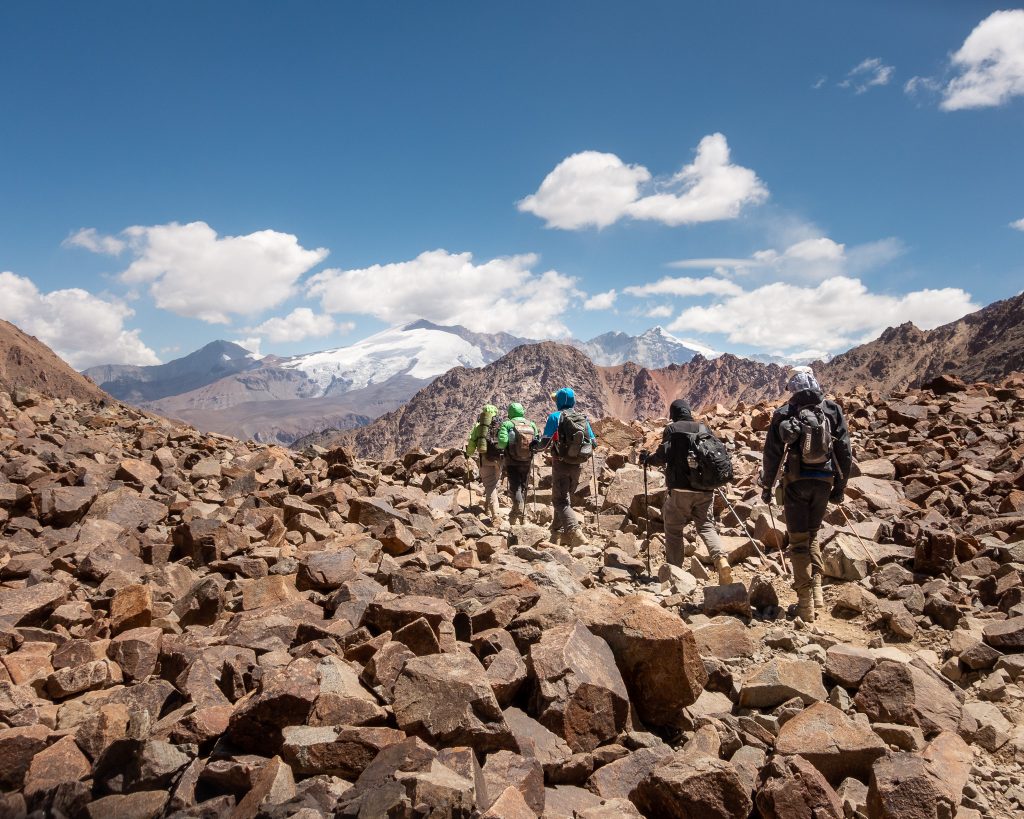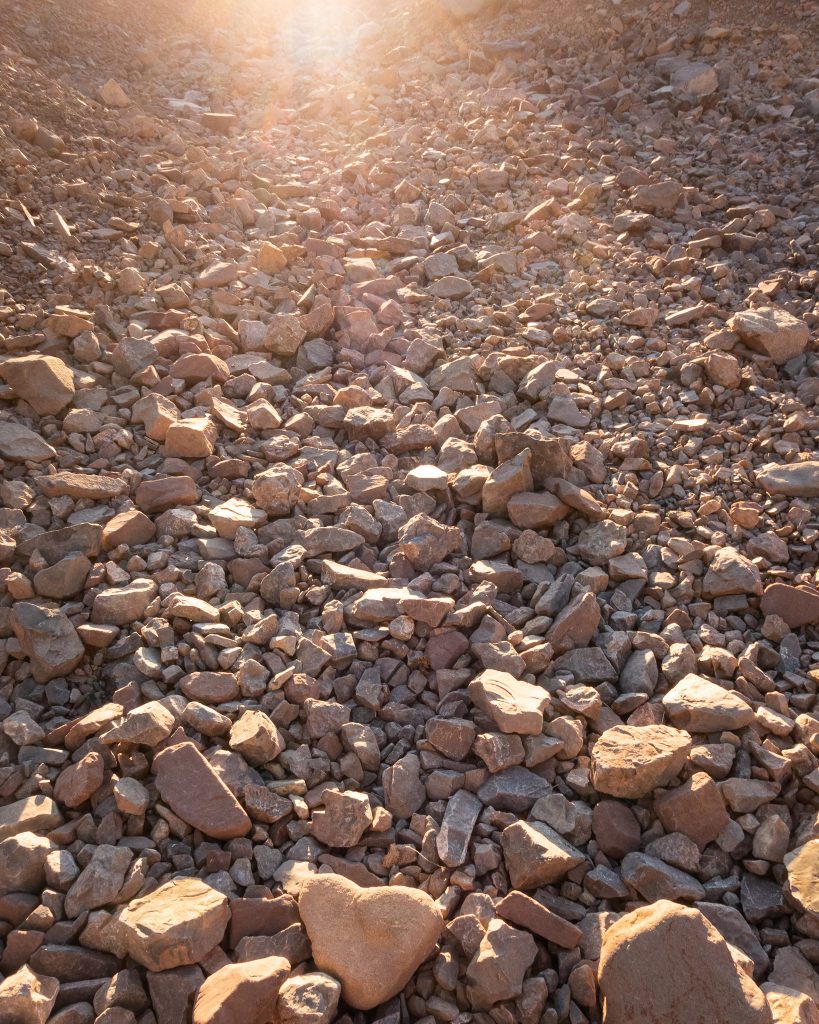At the age of twenty-two, Charles Darwin (1809-1881) started on his trip around the world. The trip would last 5 years, of which most was spent on land investigating geology and making natural history collections. After the trip, he wrote “The Voyage of the Beagle” and the influential “On the Origin of Species”.
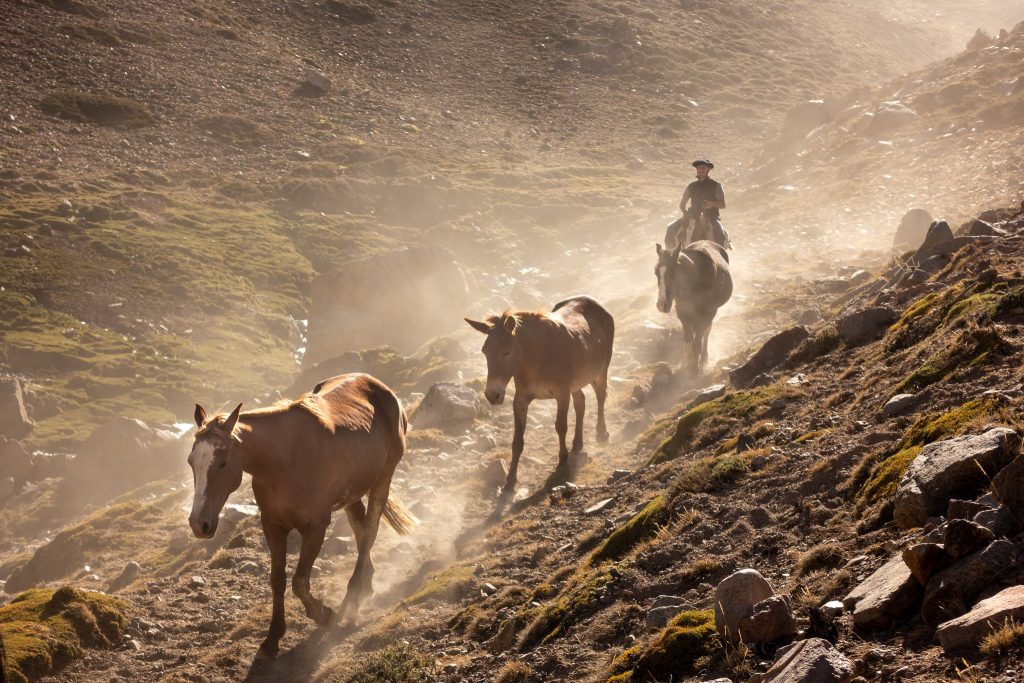
Charles Darwin’s Crossing the Andes
In 1835, when his ship was docked for repairs in Chile, Darwin hired muleteers (arrieros, gauchos) and crossed the Andes. While riding on a mule, he traveled from Santiago de Chile to Mendoza along the old trade route over the Piuquenes pass and then back along the Uspallata trail. Today, the international road “Ruta 7” has significantly transformed the landscape. The Piuquenes Pass trail, however, had remained remote. Time had stopped and the means of transportation have remained the same.
Our the Andes Trip in the footsteps of Darwin
During the past week, 185 years after Darwin, we walked the same Piuquenes Pass trail as Darwin had, but in the opposite direction, from Argentina to Chile. The trek took five days.
When Darwin traveled he took careful notes every day, and from these notes, we can read that the landscape is very much the same along this trek. The difference is that in the past years the snow and glaciers have diminished. All quotations below are from his book “The Voyage of the Beagle.”
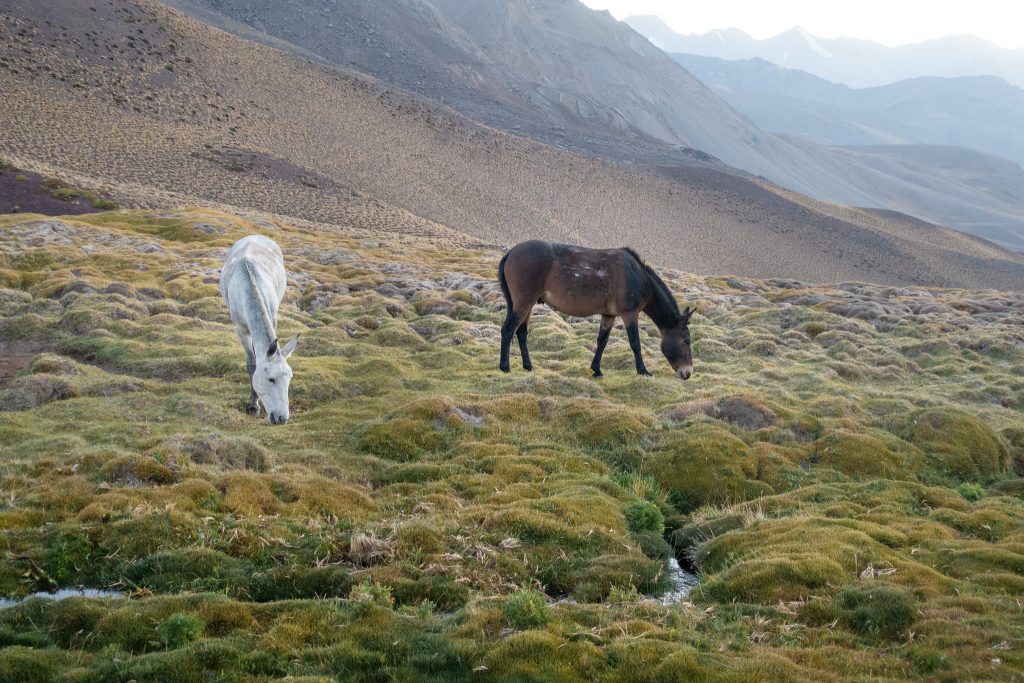
“The madrina (or godmother) is a most important personage: She is an old steady mare, with a little bell round her neck; and wherever she goes, the mules, like good children, follow her. The affection of these animals for their madrinas saves infinite trouble. If several large troops are turned into one field to graze, in the morning the muleteers have only to lead the madrinas a little apart, and tinkle their bells; although there may be two or three hundred together, each mule immediately knows the bell of its own madrina, and comes to her.“
– Darwin, “The Voyage of the Beagle”
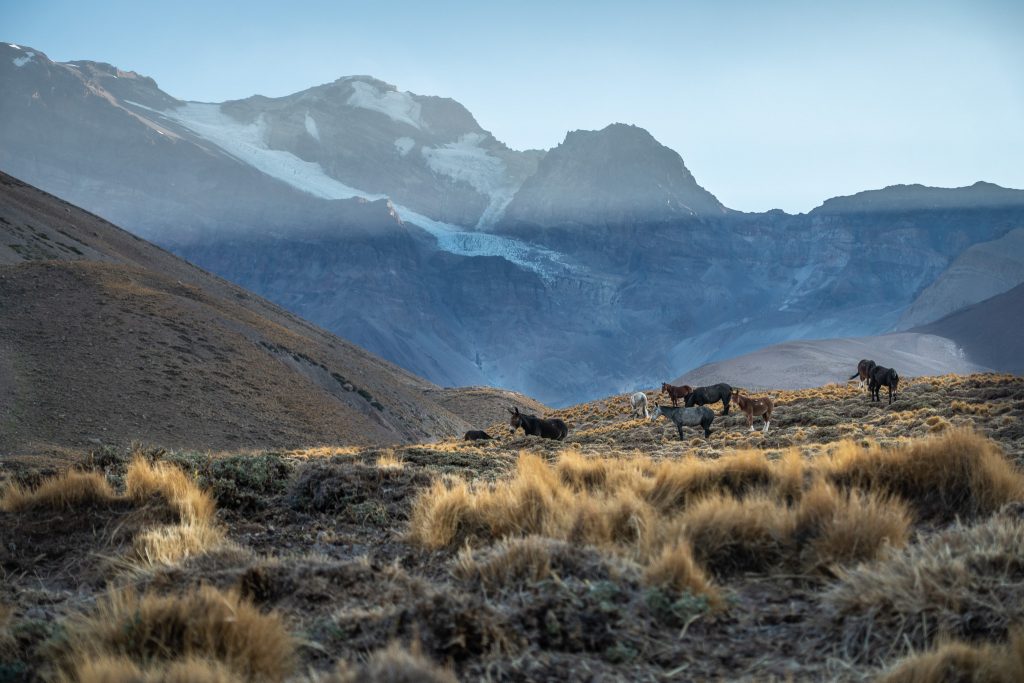
Breathtaking Experience
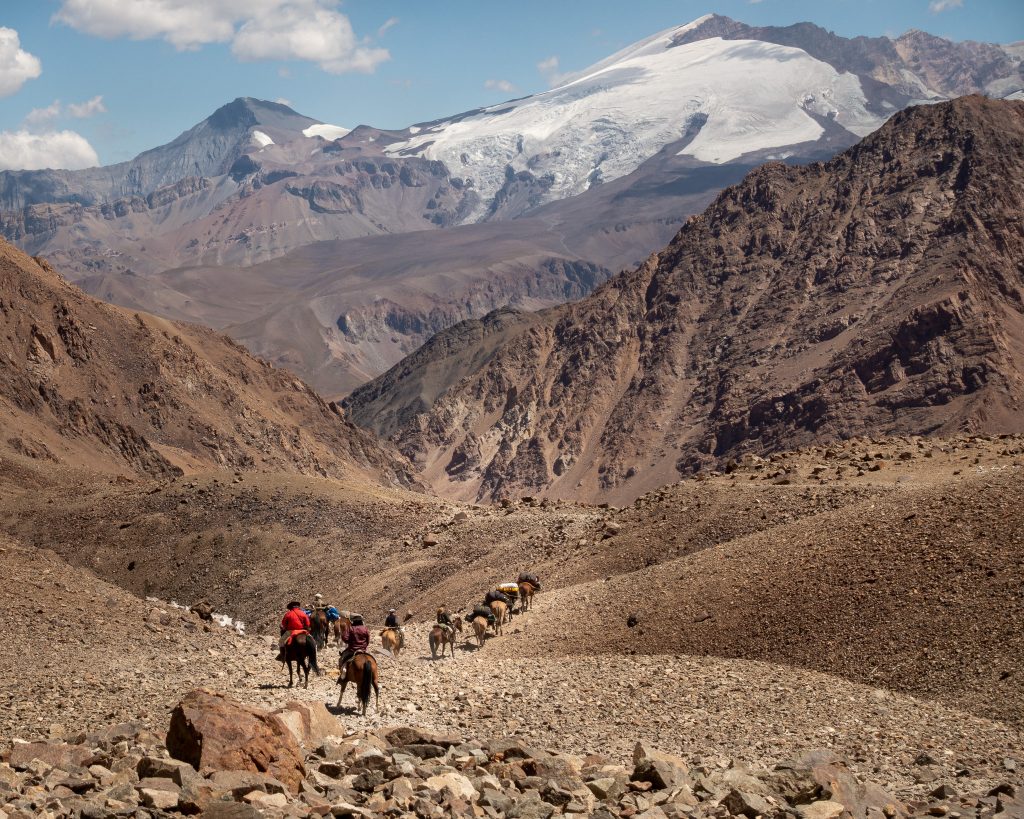
“When about half-way up we met a large party with seventy loaded mules. It was interesting to hear the wild cries of the muleteers, and to watch the long descending string of the animals; they appeared so diminutive, there being nothing but the black mountains with which they could be compared. When near the summit, the wind, as generally happens, was impetuous and extremely cold. On each side of the ridge, we had to pass over broad bands of perpetual snow, which were now soon to be covered by a fresh layer. “
– Darwin, “The Voyage of the Beagle”
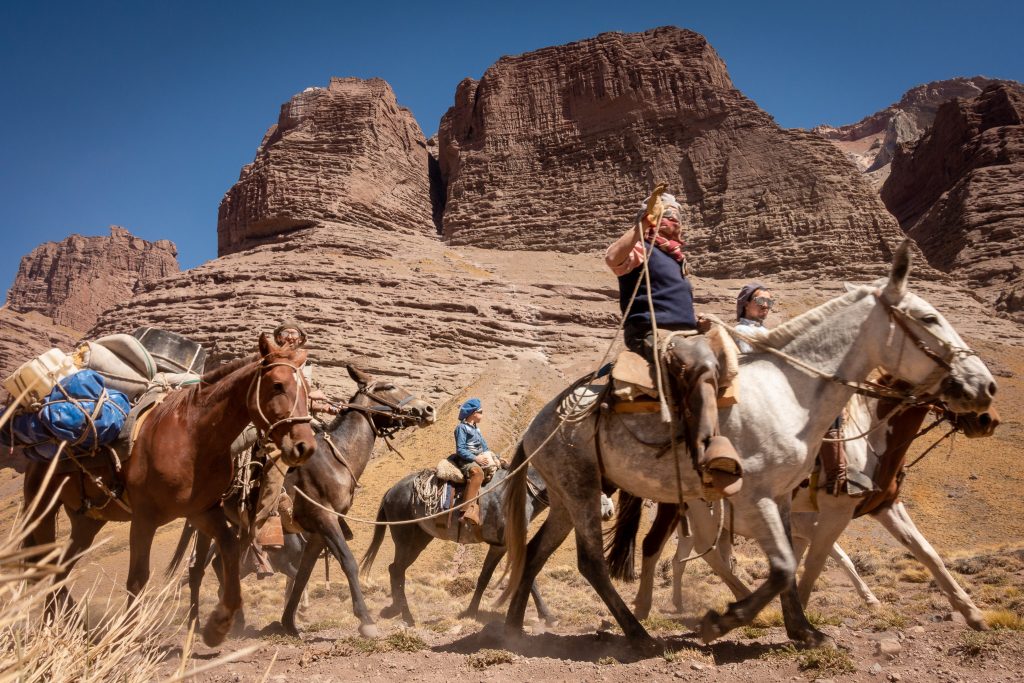
State of Wonder
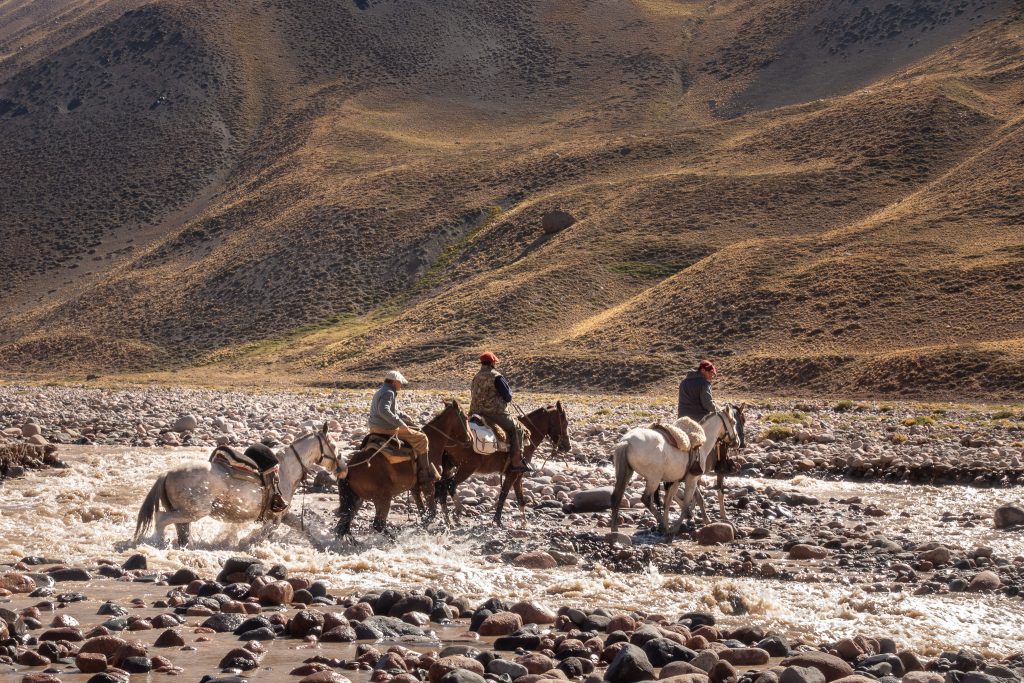
Photo By Sofie.
“The rivers which flow in these valleys ought rather to be called mountain-torrents. Their inclination is very great, and their water the color of mud… Amidst the din of rushing waters, the noise from the stones, as they rattled one over another, was most distinctly audible even from a distance. This rattling noise, night and day, may be heard along the whole course of the torrent. The sound spoke eloquently to the geologist; the thousands and thousands of stones, which, striking against each other, made the one dull uniform sound, were all hurrying in one direction.”
– Darwin, “The Voyage of the Beagle”
Trekking Through the Andes
Crumbling stones. Photos by Sofie.
” Whatever the cause may be, the quantity of crumbling stone on the Cordillera is very great.”
– Darwin, “The Voyage of the Beagle”
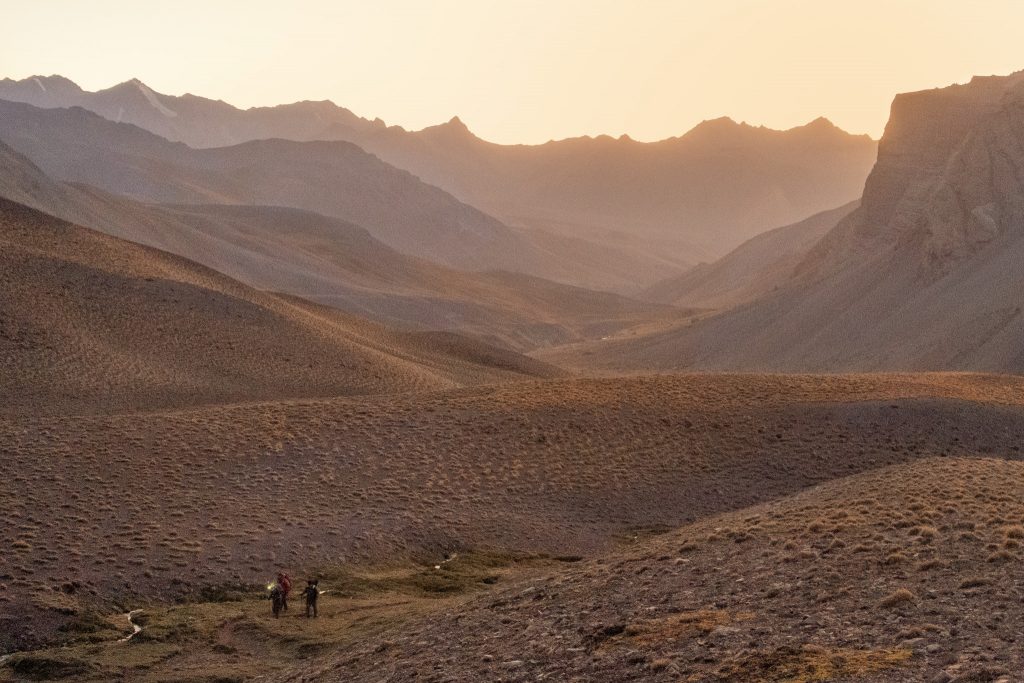
“When we reached the crest and looked backward, a glorious view was presented.”
– Darwin, “The Voyage of the Beagle”
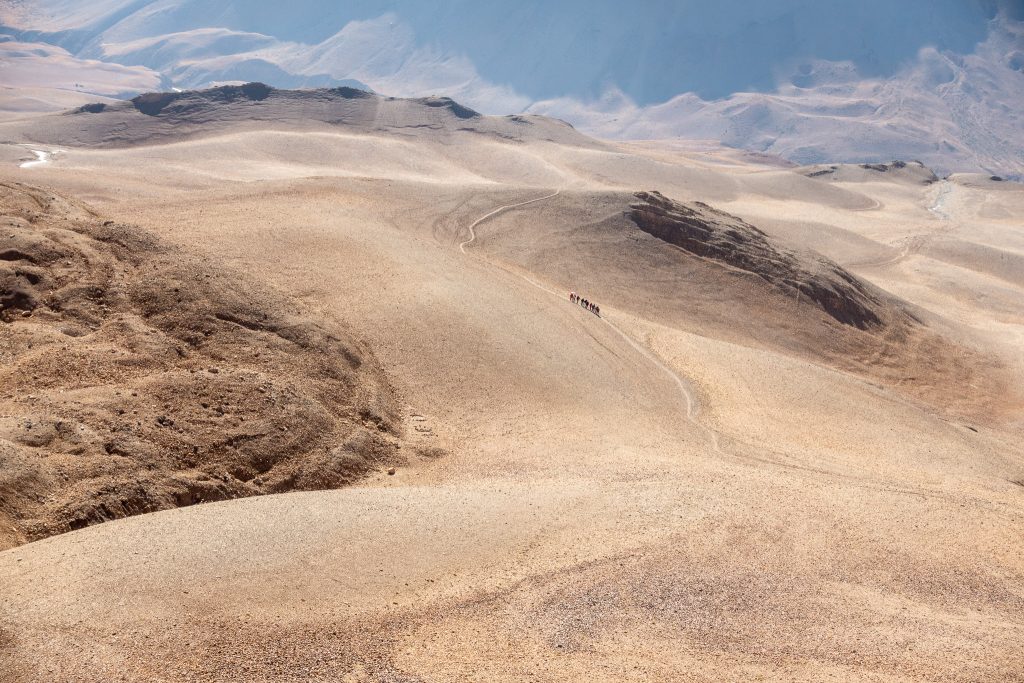
” When near the summit, the wind, as generally happens, was impetuous and extremely cold.”
– Darwin, “The Voyage of the Beagle”
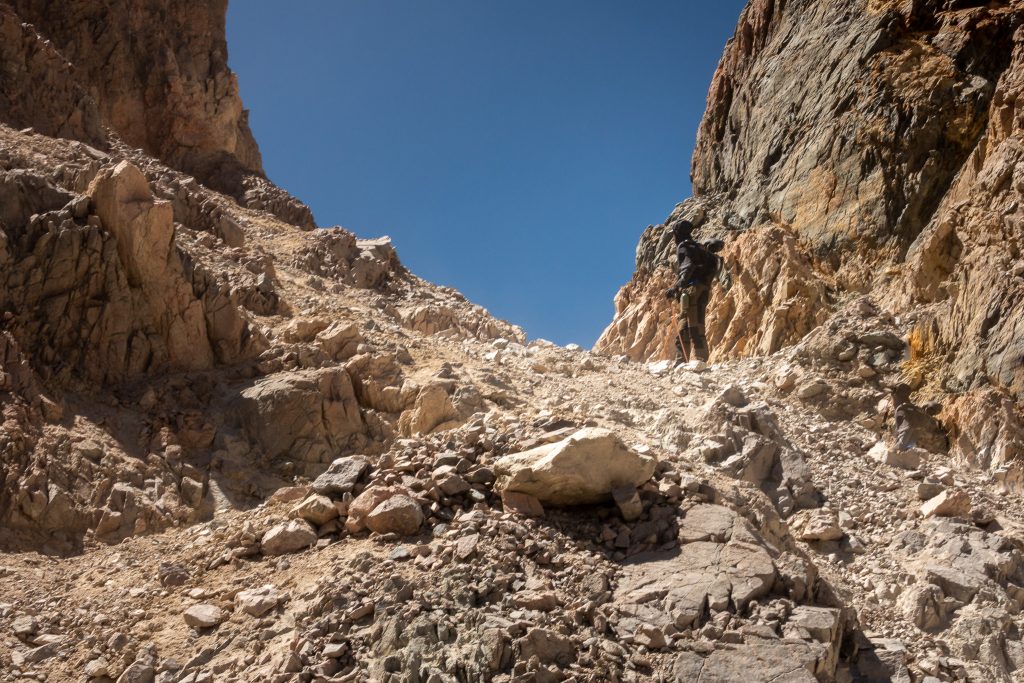
At above 14200 feet above sea level, “The pass takes its name of Portillo, from a narrow cleft or doorway on the highest ridge, through which the road passes. From this point, on a clear day, those vast plains which uninterruptedly extend to the Atlantic Ocean can be seen.”
– Darwin, “The Voyage of the Beagle”
Otherworldly Beauty
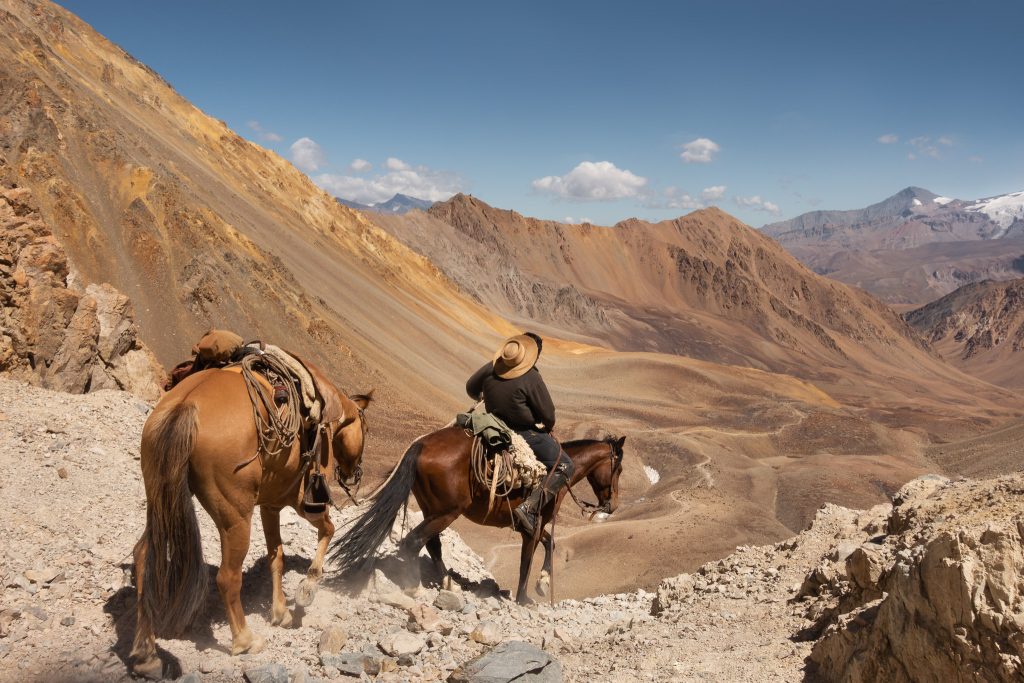
” Now commenced a heavy and long climb, similar to that of the Peuquenes. Bold conical hills of red granite rose on each hand; in the valleys there were several broad fields of perpetual snow.”
– Darwin, “The Voyage of the Beagle”
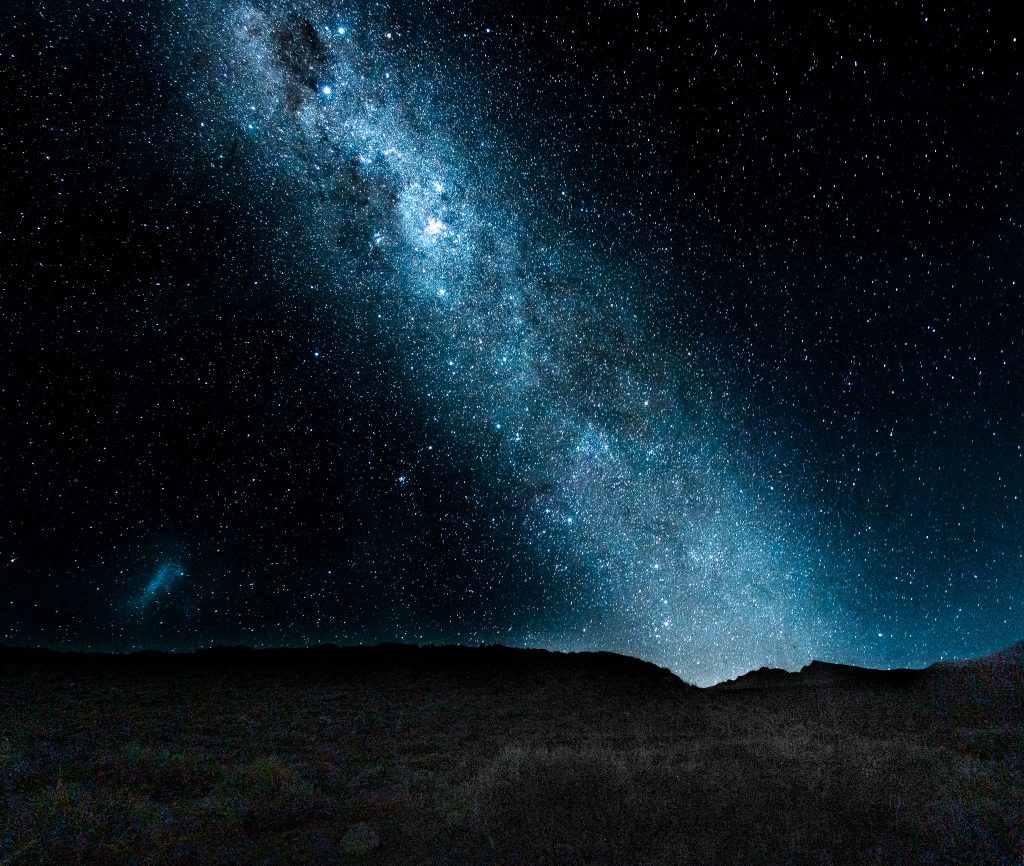
” The increased brilliancy of the moon and stars at this elevation, owing to the perfect transparency of the atmosphere, was very remarkable.”
– Darwin, “The Voyage of the Beagle”
Setting up the Camp at the Andes
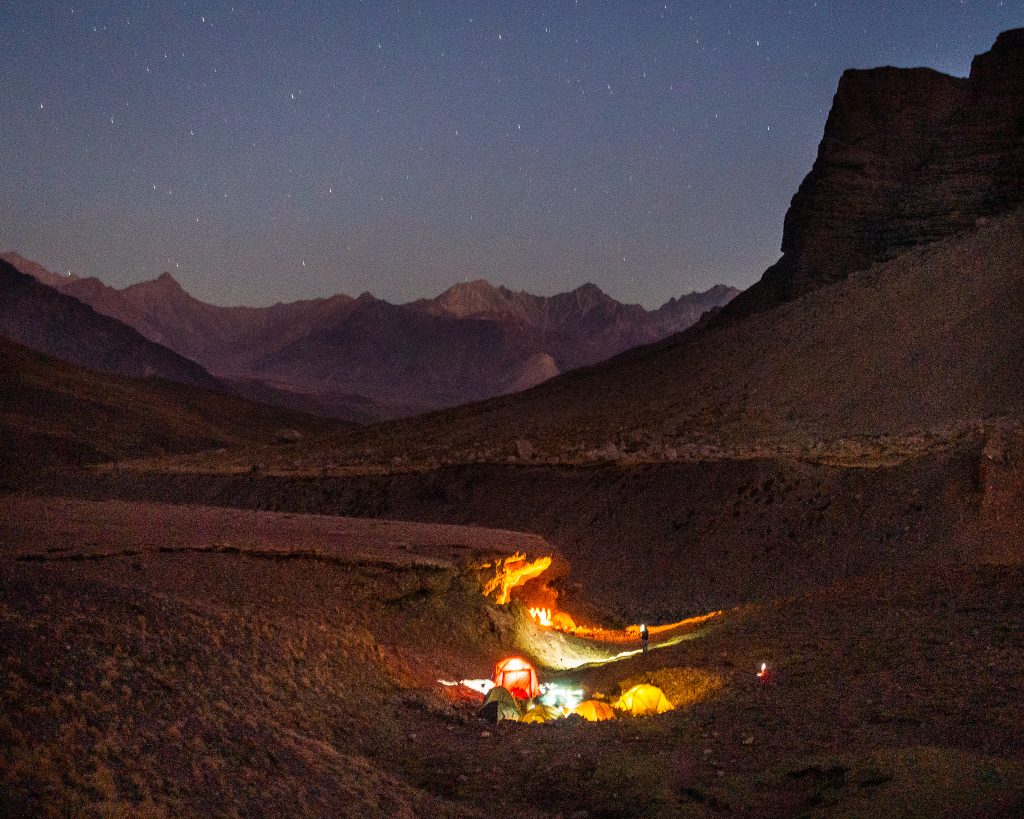
“Having crossed the Peuquenes, we descended into a mountainous country, intermediate between the two main ranges, and then took up our quarters for the night. We were now in the republic of Mendoza.”” As soon as the clouds were dispersed it froze severely; but as there was no wind, we slept very comfortably.”
– Darwin, “The Voyage of the Beagle”
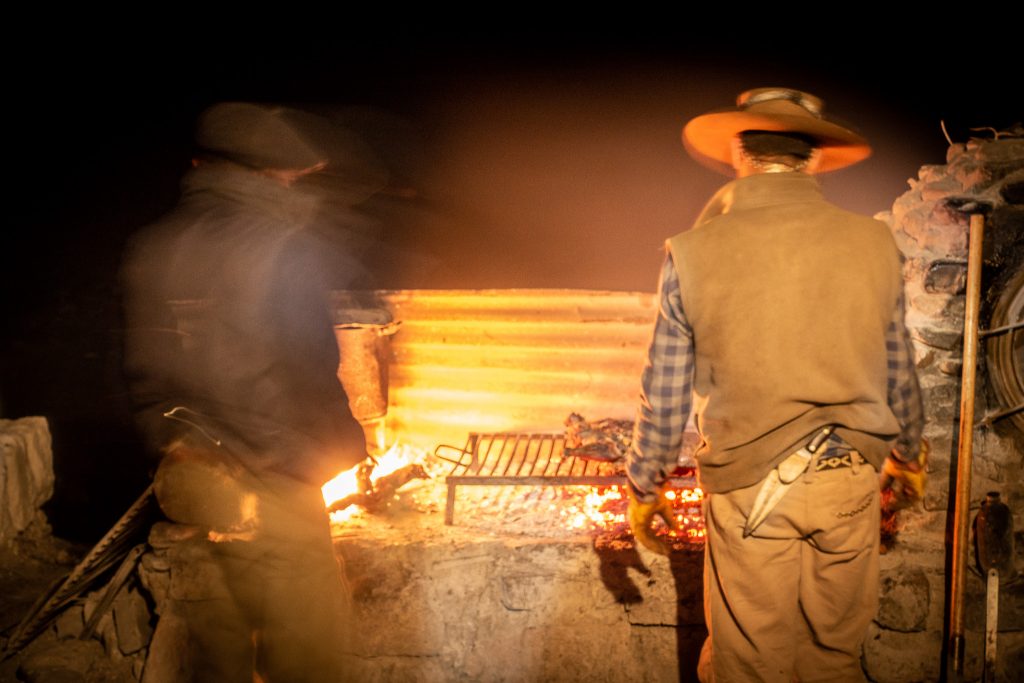
” We carried a good deal of food in case we should be snowed up, as the season was rather late for passing the Portillo.”
– Darwin, “The Voyage of the Beagle”

“Hence the potatoes, after remaining for some hours in the boiling water, were nearly as hard as ever. The pot was left on the fire all night, and next morning it was boiled again, but yet the potatoes were not cooked. I found out this, by overhearing my two companions discussing the cause, they had come to the simple conclusion, “that the cursed pot did not choose to boil potatoes.“
– Darwin, “The Voyage of the Beagle”
Once in the Lifetime Trip
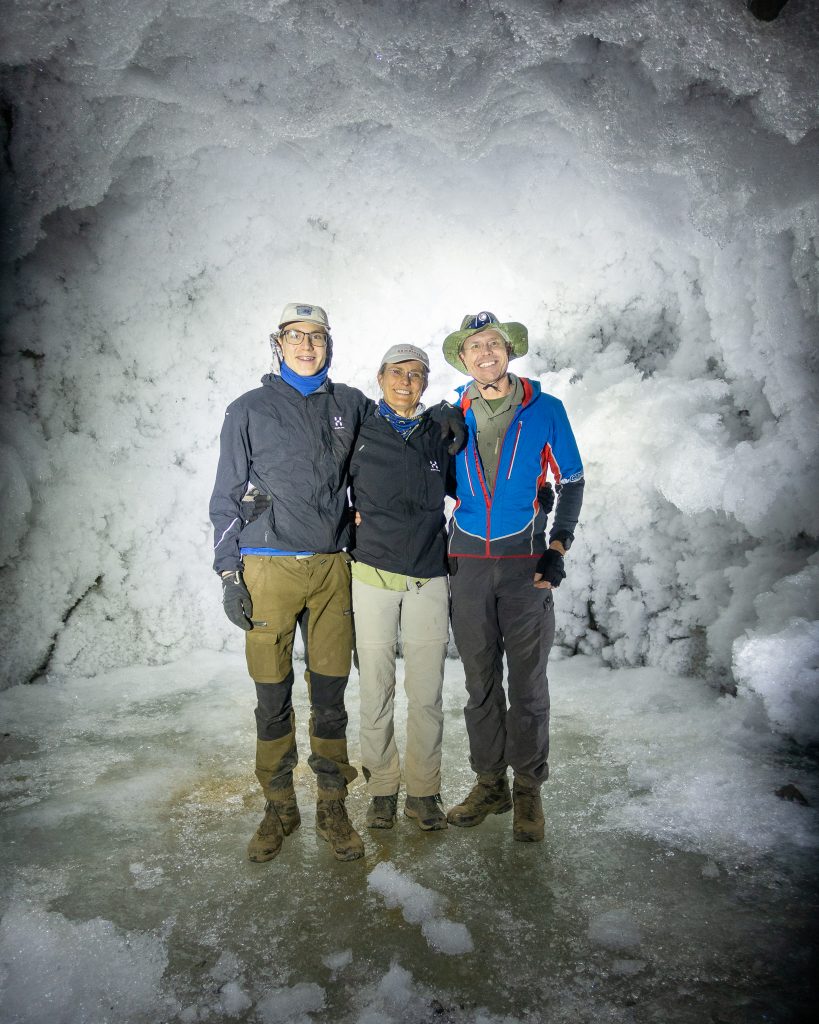
We are very fortunate to have experienced this inanimate remote area. At one point there was a plan to build a road from Argentina to Chile also through this old trading path. The project was stopped, leaving an iced tunnel that only goes some 100 yards into the mountain.
I would like to take the opportunity to share with you how beautifully Darwin describes the scenery:
“When we reached the crest and looked backwards, a glorious view was presented.
The atmosphere resplendently clear;
the sky an intense blue;
the profound valleys;
the wild broken forms:
the heaps of ruins,
piled up during the lapse of ages;
the bright-colored rocks,
contrasted with the quiet mountains of snow,
all these together produced a scene no one could have imagined.
Neither plant nor bird,
excepting a few condors wheeling around the higher pinnacles,
distracted my attention from the inanimate mass.
I felt glad that I was alone:
it was like watching a thunderstorm,
or hearing in full orchestra a chorus of the Messiah”.
”My excursion only cost me twenty-four days, and never did I more deeply enjoy an equal space of time.”
– Darwin summarizes the experience, “The Voyage of the Beagle”
About the Author
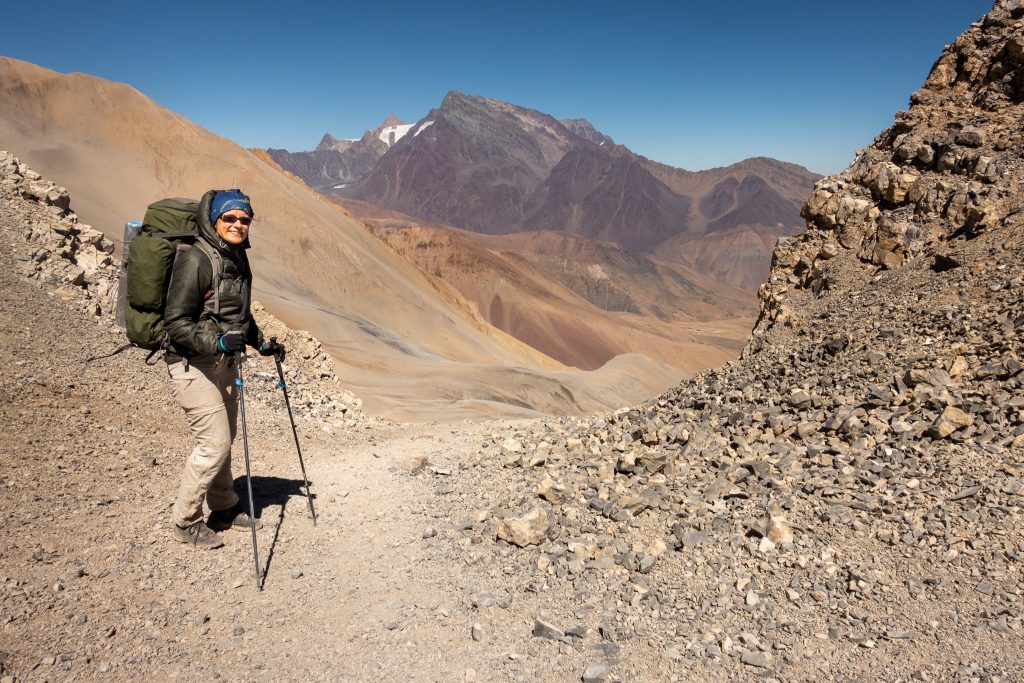
The text of this blog is written by Sofie, here standing at the border from Argentina to Chile at over 13200 feet above sea level. Thank you Tijana for inviting me to share this wonderful experience on your magnificent blog.
A Word from the Founder, Zest & Curiosity
With utmost pleasure, I published this journey so breathtakingly shared by Sofie. As I was talking with Sofie it only took just a few sentences, without even seeing the photos, to realize that this trip is life-changing. Sofie was very gracious to share her experience with us. I hope that you enjoy this post as much as I did. I savored every image. For a moment, I felt that I have stepped into another time. And, I could feel what Darwin had experienced going the same way through the Andes. How marvelous is that?
Sofie is a Helsinki based nature photographer with an M.Sc. degree in Forestry. For more of her photography, check her Instagram as well.
Enjoy in exploring the Andes, dear reader.

– Tijana
Editor-in-Chief and Creative Director
Zest & Curiosity
All photographs are protected by copyright. For more information about using and linking photos please Contact us.

